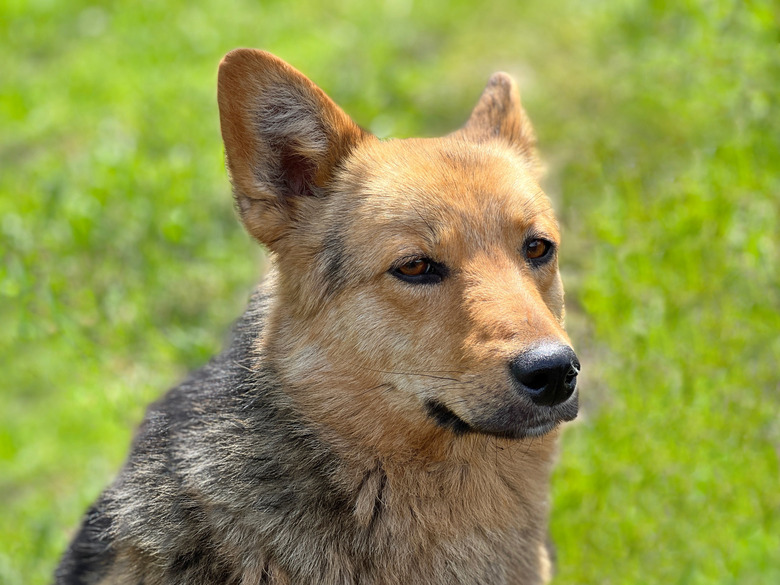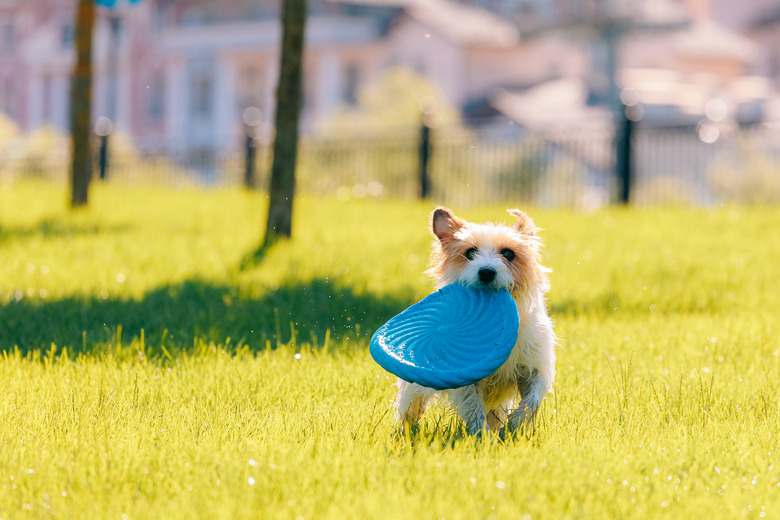Dog Spinal Injury: Diagnosing Spinal Cord Injury In Dogs
A dog spinal injury may be caused by a trauma, such as a car accident or falling off the bed, or by an illness or disease, such as degenerative disc disease. Some common signs and symptoms of a spinal cord injury in dogs include loss of feeling or paralysis, decreased muscle strength, loss of bladder control, difficulty standing, or pain. Specific symptoms vary based on the cause and type of injury to the spinal cord.
Spinal subluxation in a dog
Spinal subluxation in a dog
Spinal subluxation, or the misalignment of the spine, may cause dogs to display abnormal posture, avoid being handled by hollowing their back or dropping or extending their head and neck or refuse commands to jump, sit or stay. Dogs may show muscle stiffness or atrophy or have uncoordinated gaits. If the subluxation is causing pressure on the nerves, dogs may also be sensitive to temperature, have changes to coat such as hair loss or greasy coat or rub their tails in an unusual manner.
This condition may be caused by an acute spinal injury such as a fall or injury from a poorly fitted harness. Subluxations also occur gradually due to stress and muscle tension, being confined or walking on overgrown toenails. Dogs with long backs are more prone to spinal subluxation. And toy breeds are prone to subluxation in their neck (atlantoaxial subluxation). Dogs with long backs are more prone to spinal subluxation.
Spinal fractures in a dog
Spinal fractures in a dog
Spinal fractures are usually caused by a trauma such as a car accident, a fall, or blunt force trauma to the back. The symptoms vary depending on the severity of the fracture and the presence of a dislocated vertebrae. Swelling related to the injury may also place pressure on the spine, worsening symptoms.
In mild cases, the dog's back may be sore or painful and he may experience muscle weakness. In severe cases, dogs may lose control of their bladders and bowels and be paralyzed. If the dog continues to feel pain in his limbs, he may eventually recover. However, dogs that can't feel pain any longer are likely permanently paralyzed. These dogs require lifelong assistance with urinating and defecating.
Disc disease in a dog
Disc disease in a dog
Intervertebral disc disease in dogs can cause pain and damage nerves. This nerve impingement or nerve damage can cause functional deficits. In severe cases, dogs may be paralyzed. Dogs may be anxious, yelp in pain, exhibit pain in the hind legs, and refuse to jump. Their posture may be hunched and muscles along the back will tense or have spasms. Some dogs may not be able to empty their bladder or bowels or refuse to eat. Dogs with IVDD often also have spinal subluxation.
With this disease, the discs that provide cushioning between the vertebrae break down or bulge, creating pressure and compressing nerves in the spinal cord. The location where the dog experiences symptoms varies based on which discs are affected.
Back problems in a dachshund
Back problems in a dachshund
The dachshund breed is known for its elongated spine. While this gives them an adorable appearance, unfortunately, it also puts them at greater risk of back issues. Dachshunds are prone to intervertebral disc disease or IVDD. These dogs will need an anti-inflammatory, and cage rest, and some dogs may require neurosurgery.
IVDD refers to a bulging disk — or disc herniation — and also disc rupture. IVDD can occur in the cervical, thoracic, and lumbar spine. Discs are like shock absorbers between vertebrae, but when they harden over time, they can bulge or rupture. When they rupture, the contents of a disc — the nucleus pulposus — spills out. This disc material needs to be surgically cleaned up / removed. Sometimes simply jumping down off the couch can cause a hardened disc to rupture. Dogs who lose deep pain sensation and dogs who can't walk require surgery, though surgery may not always restore the ability to walk. Also, for back surgery, you will have to go to a specialty veterinary hospital or a college of veterinary medicine that has a small animal neurology department.
If you notice your dachshund expressing pain, standing with a different posture, such as with their head lowered and their back arched, eating or drinking less than they usually do, trouble with urination and defecation, or acting aggressively with you when you touch them, then get them examined immediately.
Spinal infections in a dog
Spinal infections in a dog
An infection in the vertebra or discs is called discospondylitis. It is often caused by an infection from a foreign body or an infection that has spread from other tissue into the spine. Initially, dogs experience back pain, but may not display muscle weakness or other neurological symptoms. As the infection progresses, pain increases and the dog becomes unable to coordinate his limbs.
Spondylosis in dogs
Spondylosis in dogs
Spondylosis is common in older dogs. Spondylosis is a common, degenerative spine disorder that occurs as a dog ages, more so in medium to large breed dogs. An abnormal growth of bone, basically they are bone spurs, in the spine causes weakness. They may or may not cause pain that increases over time. Your veterinarian will be able to detect this problem through X-rays of the spine.
Although spondylosis is not an injury caused by trauma, it can show similar signs as other problems such as intervertebral disc disease. Examination by a neurologist along with diagnostic tools such as X-rays are needed. If a dog is having problems then other tools like an MRI are often needed to determine the exact cause of the problem.
Cauda equina syndrome in dogs
Cauda equina syndrome in dogs
Cauda equina syndrome, or CES, is caused by compression of the nerves at the base of the tail. The most common cause of CES is a deterioration of the the intervertebral discs at the base of the tail, or arthritis of the joints. If this happens to your dog, the most obvious symptom is lower back pain or weakness in one or both hind limbs. Treatment depends on the severity of the CES. Pain medication and restricting movement may be enough. If not, surgical intervention is necessary. Prognosis is very good for dogs with mild pain and only mild weakness. But, in sever cases, some dogs may become paralyzed.
Degenerative myelopathy in dogs
Degenerative myelopathy in dogs
Degenerative myelopathy, or DM, is similar to Lou Gehrig's Disease in people. DM usually affects adult dogs of either sex. DM does not cause pain, but it can cause problems throughout the rest of the body due to weakness in the hind limbs. As the disease starts, symptoms may not be noticeable but as time goes on, your dog will show signs of difficulty walking, difficulty jumping up into the car, difficulty going up stairs, or a general inability to do things that involve strength in their back legs.
DM is common in several breeds, including German shepherds, Chesapeake Bay retrievers, Rhodesian ridgebacks, boxers, corgis, and standard poodles. It can also occur in other breeds and in mixed-breed dogs. The Orthopedic Foundation for Animals offers a DNA test that can identify dogs who do not have the DM gene, as well as those who are carriers and those who are at a higher risk for developing DM.
Fibrocartilaginous embolism in dogs
Fibrocartilaginous embolism in dogs
Fibrocartilage is what fibrous connective tissue is called. An embolism is when a blood vessel is blocked by some material in the circulatory system. A fibrocartilaginous embolism, or FCE, is when a blood vessel obstruction is caused by fibrocartilage. Giant and large breed dogs are most commonly affected but it can happen in mini dogs too. FCE occurs suddenly, with symptoms of pain, weakness, and/or paralysis develop quickly.
The severity of the symptoms depends on how much of the spinal cord is damaged. There is no specific treatment for FCE, so whatever your veterinarian can do will be focused on supportive care and physical assistance.
How to diagnose a dog spinal cord injury
How to diagnose a dog spinal cord injury
Since many spinal cord diseases and intervertebral disc disease sometimes show similar signs, diagnosis usually involves a process of elimination and examination by different specialists. An exam from a neurologist, X-rays, or an MRI are often needed to distinguish between conditions.
The bottom line
The bottom line
There are many causes of spinal injury in dogs. The problem could be caused by injury, a degenerative condition, or lack of blood flow from an embolism. If you notice signs of pain or weakness in your dog, have your DVM (veterinarian) examine them immediately. A neurology exam, X-ray, CT scan, MRI, or other tool may be used to determine the exact problem. Depending on the cause, physical therapy, pain medication, movement support, or rest may needed.





